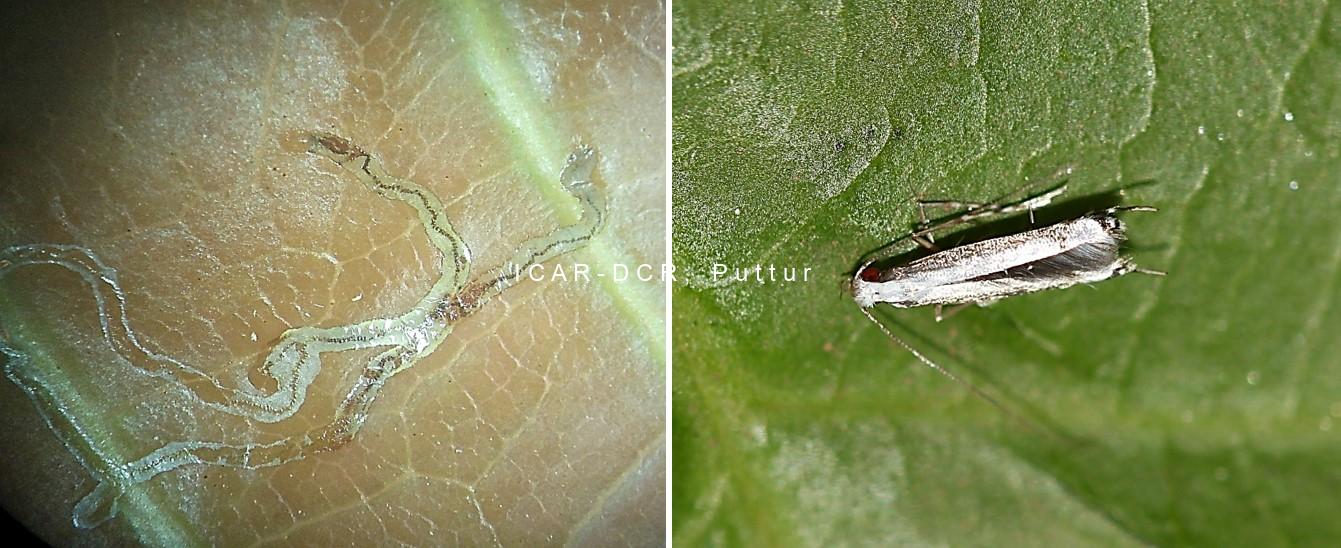Leaf miner is one of the important and notable pests of cashew during post monsoon period all over the country.
Species
Acrocercops syngramma M. (Lepidoptera: Gracillariidae)
Pest appearance
- Eggs are tiny, transparent, minute and glue like, laid on the upper side of tender leaves.
- Dull white to reddish brown small caterpillars are seen within the feeding mines.
- Pupation takes place in soil.
- The adult is a tiny silvery grey moth with red eyes.
Biology
- During the developmental period, larvae are dull white in colour.
- Full grown caterpillars measure about 5-7 mm in length, are reddish brown in colour and feed by scraping the mesophyll below the epidermis.
- After full development, the larvae fall off to the soil where they pupate and emerge after 7-9 days.
- The adult lays eggs on upper surface of tender leaves.
Seasonal incidence
The incidence is most common in post monsoon flushes during August-December reaching the peak during October- November.
Host plants
Mango (Mangifera indica), jamun (Syzygium cuminum)
Symptoms of damage
- The mining injury by caterpillars occurs both in tender leaves as well as shoots. Young plants are observed to be prone to attack by this pest.
- The caterpillars mine and feed below the epidermal layer of the tender leaves causing extensive leaf blisters which later dry up causing distortion, browning and curling of the leaves.
- As the attacked leaf ages, holes develop due to drying out of the damaged portion.
Management measures
- Spraying may not be required since, natural enemies especially larval parasitoids manage this pest even up to 50 per cent.
- Two larval parasitoids viz., Chelonus sp. and Sympiesis sp. are recorded on leaf miners in Kerala and Goa. Besides, Chyrsocharis sp., Aprostocetus sp. and Closterocerus sp. (Eulophidae) are recorded in Puttur region of Karnataka.
- But under severe incidence in nursery and young plants, spraying is required. Spraying of profenophos (1.5 ml/lit) or lambda-cyhalothrin (0.6 ml/lit) can effectively manage leaf miners.



